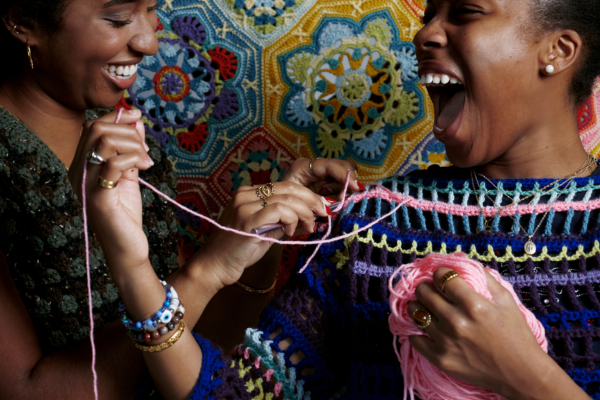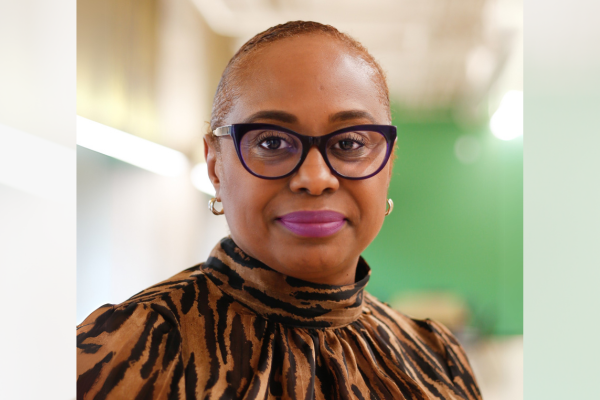New Hart House exhibit bridges research and art to explore Black joy, mental health


A new exhibit at Hart House explores how Black members of the University of Toronto community embody and celebrate joy.
Curated by Mercedes Sobers, a doctoral candidate in epidemiology at the Dalla Lana School of Public Health (DLSPH), the exhibit compliments her dissertation on mental health outcomes and service use for Black adolescents and adults, an area where available data shows a significant gap.
She launched the Black Joy Art Initiative in 2024 as a creative outlet where she could provide a strengths-based counterbalance to the structural inequities and service gaps revealed in her dissertation research.
“I know the Black community to be extremely vibrant and joyous,” says Sobers.
“Even though, through my dissertation work, I am only able to look at things from a data perspective, I know there are things that the Black community are doing to protect their mental health and foster wellness in their lives.”
The month-long exhibit features photographs of University of Toronto students, researchers, faculty, staff and alumni engaged in their mental wellness practices and hobbies. It also includes video interviews with community members and daily interactive elements aimed at sparking conversations and self-reflection.
A launch event will take place May 15 in the East Common Room at Hart House.
The exhibit draws on research supported by the Social Sciences and Humanities Research Council through DLSPH Professor Dionne Gesink’s project, “Wellness and the Architecture of Public Health Education Study.”

The Black Joy Art Initiative also received support from the Connaught PhDs for Public Impact Fellowship Program and two opportunities offered through U of T strategic initiatives: the School of Cities Graduate Fellowship Program and the Inlight Student Mental Health Research Training Program. Support was also provided by the Black Research Network, Black Student Engagement Fund, and Hart House Good Ideas Fund.
Sobers collaborated with Toronto-based photographer Steve Williams Jnr. and video team BigSix Media to bring participants’ stories to life. Photoshoots were guided by conversations with participants about how they care for their mental health, which revealed both conscious and unconscious self-care practices used by participants.
“I want folks to recognize the very accessible ways that mental health practices are scattered throughout their lives,” Sobers says.
“Understanding and recognizing the everyday practices that support our mental health empowers us to use them more intentionally in our daily lives.”
Project features include Brice Batomen, an assistant professor of epidemiology at DLSPH, who finds a sense of perspective in the vastness of the universe at the Dunlap Institute’s observatory. Sekou Gregg, program coordinator of the Outreach and Access Program at DLSPH, who is also a music producer, was photographed at Play De Record on Spadina Avenue. Muhammed Yakubu, a fifth-year student in computer engineering, finds that mental wellness comes from community, positivity and connection.

Video interviews explored what mental health means to participants, how they foster mental health in their lives, and how access to care can be improved for the Black community.
“Culturally adaptive mental health care was a topic of conversation, and almost all of our participants talked about the importance of Black mental health providers,” Sobers says.
At the exhibit, attendees can take part in activities focused on mental health. One activity uses a large emotion wheel to help participants identify how they’re feeling to better recognize and express their emotions. To compliment the activity, stickers are available as a reminder to check in with their emotions regularly.
Another interactive activity includes a response board where participants can answer questions featured in the video interviews. They can write or draw their responses to post on the board and reflect on others’ contributions.
“I hope people are better able to identify ways they can promote mental wellness throughout their lives,” Sobers says. “And I hope this creates another space to talk about mental health because it is something I think so many of us are willing to talk about.”







